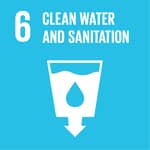It’s one of the “world’s leading conservation organizations,” best known for its panda logo. It’s mission is to “conserve nature and reduce the most pressing threats to the diversity of life on Earth” so that the future is one in which “people live in harmony with world wildlife.” It has 6 global goals;
- To ensure that the world’s most important fisheries and ocean ecosystems are productive and resilient and improve livelihoods and biodiversity.
- The most iconic and endangered species are secured and recovering in the wild
- The integrity of our most important forests, including their benefits to human well-being, is enhanced and maintained
- Freshwater ecosystems and flow regimes provide water for people and nature
- A global shift toward a low carbon and climate resilient future is achieved
- Sustainable food systems conserve nature and maintain food security
It has more than 5 million members working in >100 countries.
Program Areas:
Priority Footprint Areas:
- Carbon, Energy & Climate – Energy use, impact of forest loss, and the need for a new global policy on climate change)
- Sustainable cities – Transition of cities for sustainable development
Priority Places:
Publications:
- News & Press
- Educational resources
- Library of annual reviews, science briefs, audits, reports, etc.
HIGHLIGHTS:
- Living Planet Index – Measures “trends in thousands of populations of mammals, birds, reptiles, amphibians and fish across the globe shows a decline of 58 per cent between 1970 and 2012. If current trends continue, the decline could reach two-thirds by 2020.”
- Living Planet Report 2020 : “This report reminds us that we destroy the planet at our peril—because it is our home. As humanity’s footprint expands into once-wild places, we’re devastating species populations. But we’re also exacerbating climate change and increasing the risk of zoonotic diseases like COVID-19.”
- Living Planet Report: Aiming High (Oct 2018, 144p;35p Summary) The 12th edition the WWF’s biennial flagship report, provides the latest data of the Living Planet Index, which tracked over 4,000 vertebrate species in the 1970-2014 period. The key finding is that global populations have declined by 60% due to agriculture and over-exploitation, and increasing human consumption. WWF proposes a new global deal for nature to reverse biodiversity loss, with a roadmap for action, 2020 to 2050, offering clear goals, targets, and metrics, in support of the Bending the Curve of Biodiversity initiative. Also see Nature Communications 10 (3 Jan 2019) on the rapid decline of bees and other invertebrates.
- Hydropower pressure on European rivers: The story in numbers (December 2019, 40p, 14p summary) – An assessment of European hydropower and river health in Europe, that makes it clear how unsustainable excessive damming is to the health of river systems. “The first ever Europe-wide inventory of hydropower plants shows rivers to be saturated with hydropower dams and thousands more on the cards. This is despite EU rules which should limit new hydropower plants.





















